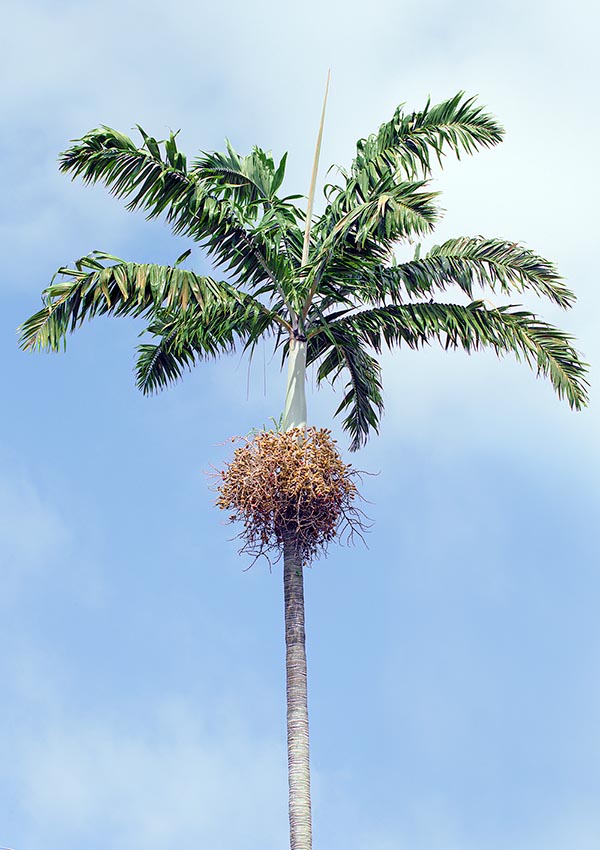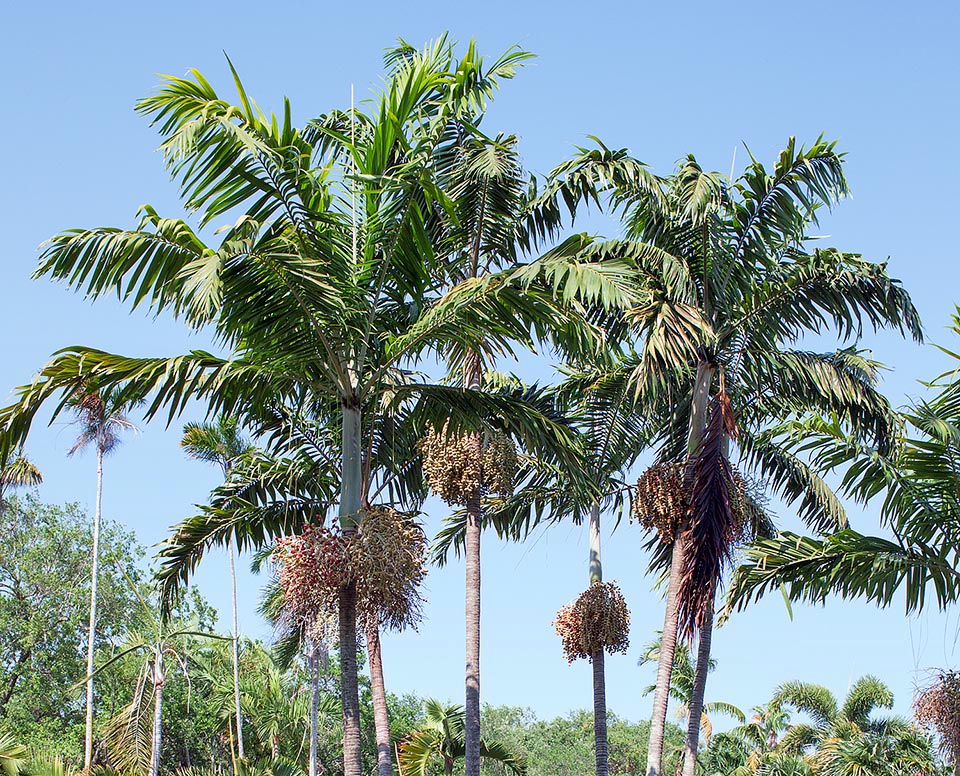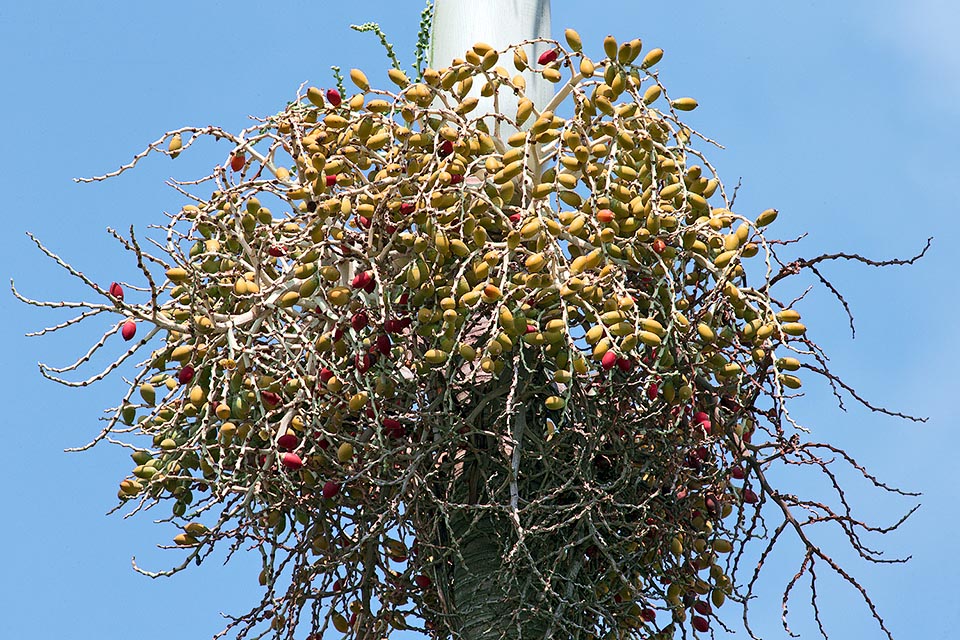Family : Arecaceae

Text © Pietro Puccio

English translation by Mario Beltramini

The Veitchia arecina of Vanuatu is at home on the volcanic soils in the humid forests of Nguna Island © Giuseppe Mazza
The genus is honoured to the family Veitch, owner of the famous Londin nursery, founded by John Veitch (1752-1839), active from the XVIII to the XX century, who introduced in Europe a huge numbaer of exotic species; the Latin specific name is the diminutive of Areca.
Common names: Montgomery palm (English).
The Veitchia arecina Becc. (1921) is an unarmed monoecious species with erect stem, solitary, slightly enlarged and with adventitious roots at the base, smooth, of whitish colour, 15-28 m tall and of 15-25 cm of diameter, on which are prominent the rings trace of the junction of the fallen leaves. The leaves, about 11 in the adult plants, on short petiole, are pinnate, slightly arcuate, horizontal to ascending, up to 3 m long.
Leaflets, about 50 per side, regularly arranged along the rachis on the same level, horizontal or slightly drooping, from 20 cm to 1 m long and 2 to 5 cm broad, lanceolate with apex truncated obliquely and irregularly toothed, of dark green colour, with the central vein and the marginal ones prominent and provided in the lower page of “ramenta” (tiny brown elongated scales with the margins irregularly toothed).
The foliar base wraps completely the stem for a length of 0,8-1,4 m forming a sort of tubular capital, slightly swollen at the base, of pale green colour and thickly covered by tiny white scales, but towards the apex and on the petiole where they are brown-blackish.
The inflorescences, on an about 15 cm long peduncle, covered by a whitish tomentum, generate under the leaves (infrafoliar), are 0,8-1 m long, ramified, with greenish white unisexual flowers arranged in triads (one female flower between two male), except in the terminal part where are present only solitary male flowers. Oblong male flowers, about 1,5 cm long and of 0,7 cm of diameter, with 80-130 stamina, globose female flowers, about 0,6 cm long and of 0,5 cm of diameter, with 3 stigmata.
Ovoidal fruits initially green, then yellow and finally bright red when ripe, 3-5,5 cm long and of 2,5 cm of diameter, containing one single ovoidal seed, ip to 2,5 cm long and of 1,8 cm of diameter.

Palm among the most ornamental in absolute, can be 28 m tall with trunks of 15-25 cm of diameter with the elegant trace of the fallen leaves junction © Giuseppe Mazza

Besides the flowers, it easily distinguishes from the analogous Veitchia winin for the large double fruits, 3-4,5 cm long with 2,5 cm of diameter © Giuseppe Mazza
Synonyms: Veitchia hookeriana Becc. (1921); Veitchia macdanielsii H.E.Moore (1957); Veitchia montgomeryana H.E.Moore (1957).
→ For general notions about ARECACEAE please click here.
